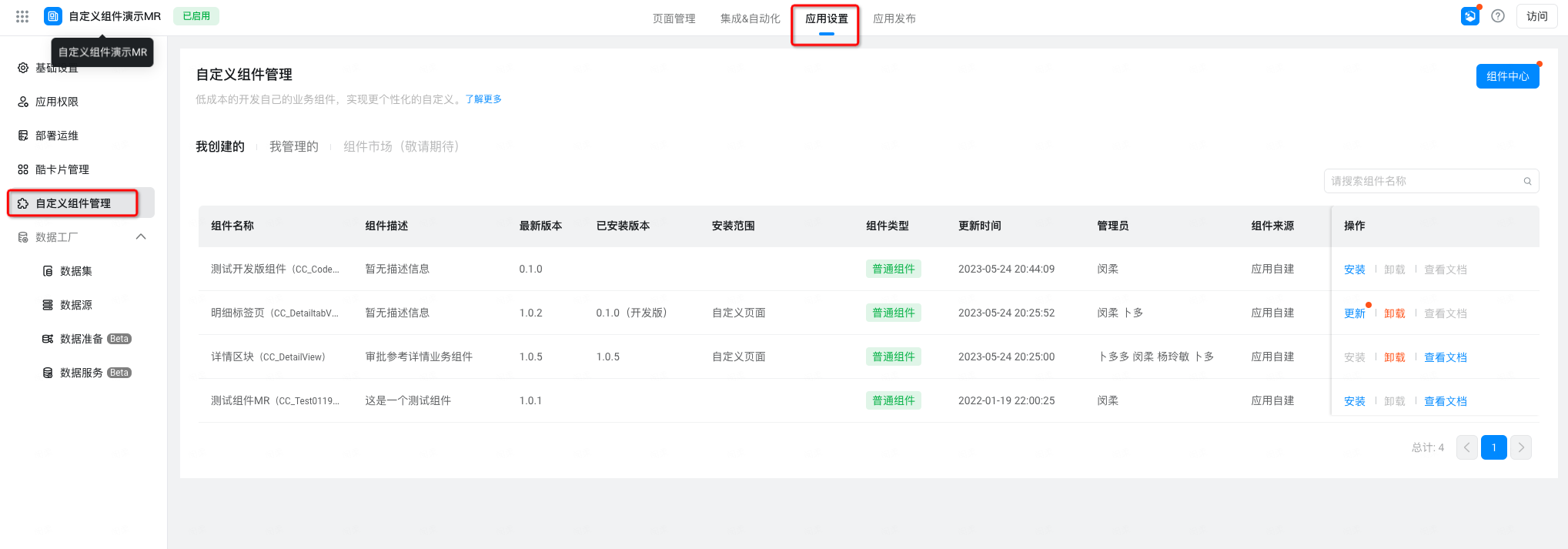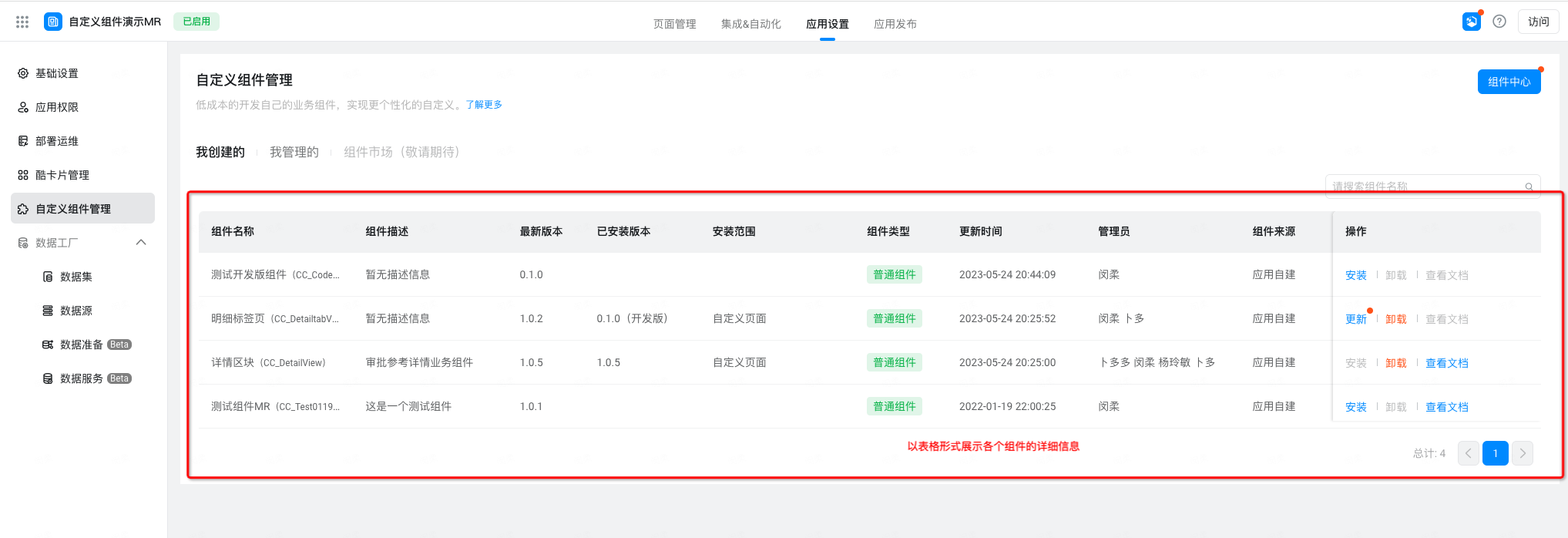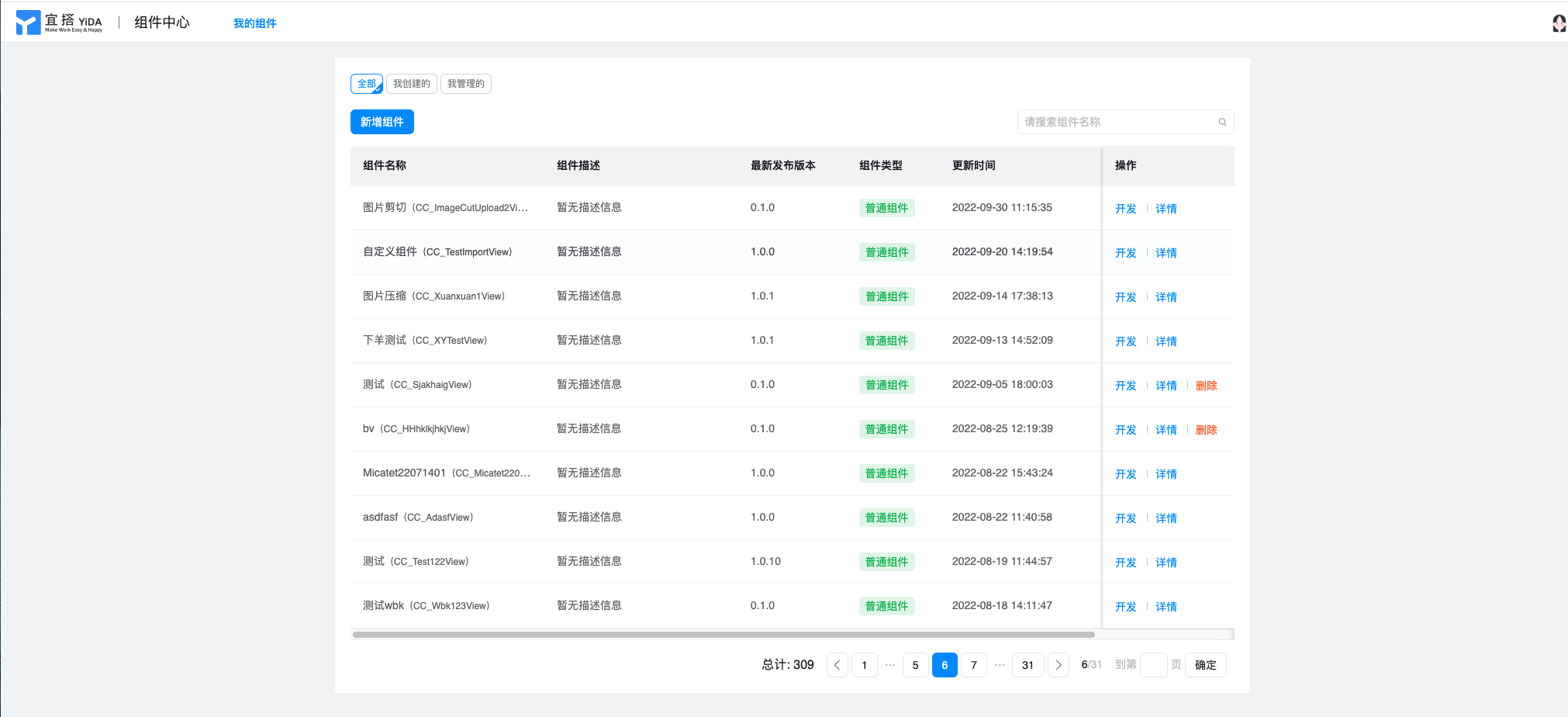Component Management
1. Page introduction
Component ManagementPage for viewing and installing custom components, dividedComponents I created 」,I manage 」AndComponent Market 」(Not open yet, please look forward ~)Three modules display components from different dimensions to facilitate user management of components.
1.1 page entry
Path:Application background> Application Settings> Component Management. (As shown in Figure 1.1-1)

Figure 1.1-1 Component Management Portal
1.2 details of page functions
1.2.1 component management table
Page DivisionComponents I created 」,Components I manage 」AndComponent Market 」(Not open yet, please look forward ~)Three modules display the information of the above three dimensions in the form of tables. (As shown in Figure 1.2-1)

Figure 1.2-1 component information display
The display content of each dimension is as follows:
- The component I created:DisplayCurrent logon personThe information of the created component.
- Components I manage:Show that I haveManagementPermission component information (you can add the current login as administrator in the component details)
- Component Market:Not open yet, please look forward ~
Description of each information in the component information table:
Project name | Meaning | |
Component name | The name of the component that you entered when the component was created cannot be modified once it is created. | |
Component Description | The general information of the component when the component is created. It will be OK laterModify. | |
Latest version | The highest version of the current component development iteration | Click hereView component Version differences |
Installed version | The version currently available in the form designer. | |
Component Type | The type of the current component,Click ViewDescription of the component type. | |
Installation scope | The installation scope of the current component determines whether the component can be used within the specific page type of the current application,Click ViewDescription of the installation scope. | |
Update Time | The last release time of the current version of the component. | |
Administrator | You have the permission to develop and debug the current component. By default, it is the component creator.Add or delete by administrator. | |
Component source | Sources include: Application self-built or application distribution | |
Operation-install | Install the current component. Note thatComponent versionAnd componentsInstallation scopeThe selection. | |
Action-update | After the component is installed for the first time, you can continue to update the version. | |
Action-uninstall | After the component is installed, you can uninstall components that are visible (created by yourself/managed by yourself),The current component and its specific version have been installed to the selected page range. After clicking uninstall, the component will no longer appear in the list of all installed pages> component libraries> custom components, however, the content of the saved page is not affected, but the content of the component cannot be added or modified twice. Proceed with caution! | |
Actions-View Documents | Click to view the description document of the current component and fill in the component creation or basic information as a document link to facilitate component users to understand. | |
1.2.2 component Center
Click in the upper-right corner of the page.Component CenterButton to enter the component center. (As shown in Figure 1.2-2)

Figure 1.2-2 Schematic diagram of component Center
Permission description:
- When you have the permissions of the platform administrator and application administrator, you can go to the component center to view the list of all components with the current visible permissions.
- In the list of all components in the visible range, if a component has not been assigned the component administrator permission to the current logon person, the prompt does not have the permission to develop the component.
Where:
- Add componentsButton: AvailableCreate custom components.
- Component List:AndComponent Management tableThe difference is that my component page table can be displayed (all, I created, and I managed components list)
- Click the development buttonDevelop and debug components
- Click details.View or modify component information
- Click delete to delete components that are visible (created by yourself/managed by yourself).The current component is not installed in any application and cannot be recovered after deletion. Proceed with caution.